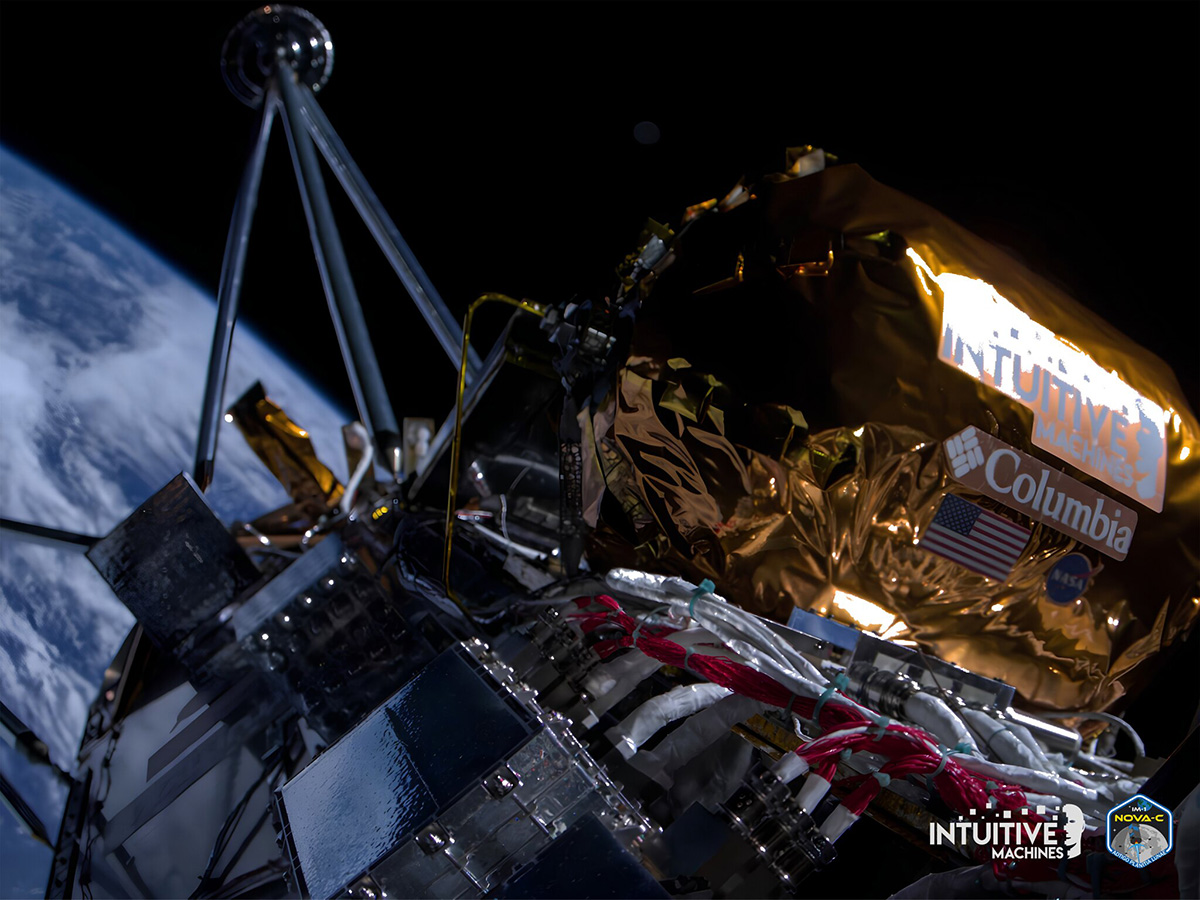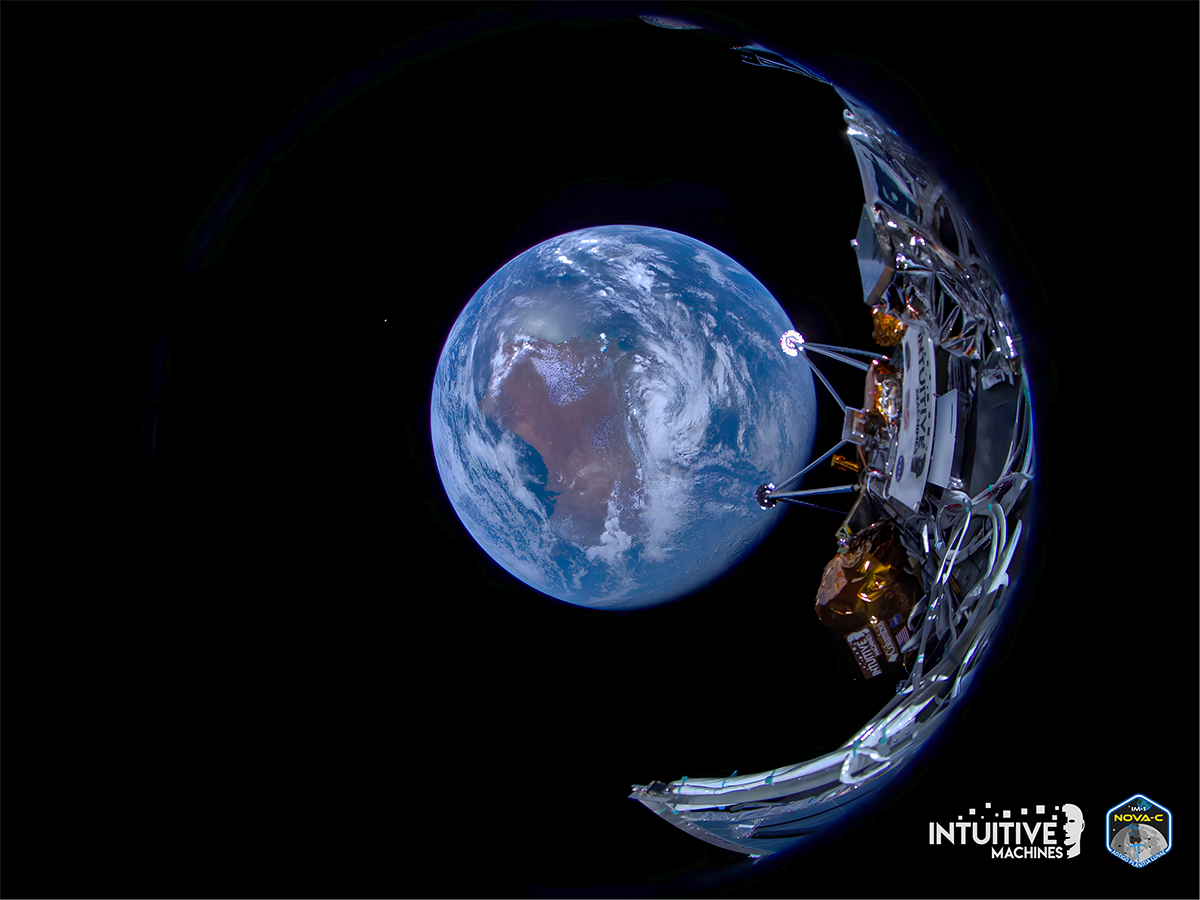Intuitive Machines Odysseus lander successfully lands on moon
Odysseus has established itself as the inaugural private spacecraft to softly land on the moon, pioneering commercial lunar missions and beyond.
Following a suspenseful descent and a period of anxious silence from the lunar surface, the United States has successfully made its return to the moon.
Odysseus, a robotic lander developed by the Houston-based Intuitive Machines, successfully touched down near the lunar south pole on the evening of February 22.
This marked a historic achievement: it was the first time a private spacecraft had ever achieved a soft landing on the moon, and it was the first time an American vehicle had done so since NASA's Apollo 17 crewed lander in December 1972.
"What a triumph! Odysseus has taken the moon," NASA Administrator Bill Nelson said in a video message the agency aired just after confirmation of a successful touchdown. "This feat is a giant leap forward for all of humanity. Stay tuned!"
Back to the lunar surface

Throughout the 1960s and early 1970s, the moon was a prime destination for American space missions, driven not just by scientific intrigue but by the geopolitical climate of the Cold War era. The quest to land astronauts on our closest celestial neighbour was fuelled by the desire to showcase technological dominance over the Soviet Union.
The United States successfully landed 12 astronauts on the lunar surface across six Apollo missions spanning from 1969 to 1972. This achievement effectively concluded the moon race, prompting NASA to shift its focus towards the space shuttle program and other objectives in human spaceflight.
Post-Apollo missions saw the United States deploying robotic probes to the moon, such as NASA's Lunar Reconnaissance Orbiter, which has been in orbit since 2009. However, plans to return to the lunar surface took a backseat until a resurgence of interest in recent years.
In December 2017, a new directive from then-President Donald Trump called for NASA to send astronauts back to the moon in the foreseeable future. This led to the inception of the Artemis program, an ambitious initiative aiming for a sustainable human presence on and around the moon by the 2020s, with the eventual goal of aiding manned missions to Mars in the late 2030s or early 2040s.
NASA's strategy includes establishing Artemis bases in the moon's southern polar region, believed to contain significant water ice reserves. Prior to manned missions, the agency seeks to gather more data on this relatively unexplored territory to ascertain the availability and accessibility of water.
To facilitate this, NASA launched the Commercial Lunar Payload Services (CLPS) program, contracting American companies to send scientific instruments to the moon aboard robotic landers.
Sue Lederer, CLPS project scientist at Johnson Space Centre, emphasised during a February 12 press conference, "The goal here is for us to investigate the moon in preparation for Artemis, and really to do business differently for NASA. One of our main goals is to make sure that we develop a lunar economy."
Intuitive Machines is at the forefront of this renewed lunar exploration effort.
Bringing NASA science back to the moon
In 2019, the CLPS initiative chose Intuitive Machines to transport a suite of NASA scientific instruments to the moon aboard their Nova-C lander, roughly the dimensions of a British telephone booth.
Following some adjustments, this undertaking was valued at $118 million, as recently disclosed by NASA representatives. This investment facilitated the delivery of six NASA experiments and technological demonstrations on the inaugural lunar mission by Intuitive Machines, dubbed IM-1, which utilises a Nova-C vessel named Odysseus, in homage to the legendary Greek mariner.
These NASA instruments, which incurred an additional development cost of $11 million for the agency, are tasked with a variety of scientific inquiries. For example, one device, the NDL ("Navigation Doppler Lidar for Precise Velocity and Range Sensing"), employed LIDAR technology to gather data during the descent and landing phases, proving crucial for the successful touchdown.
Another device aims to examine the interaction between the spacecraft's engine exhaust and the lunar soil and rocks. Additionally, a separate instrument will test autonomous positioning technology, potentially laying the groundwork for a comprehensive, GPS-like navigation system on and around the moon.
Intuitive Machines also included six commercial payloads on Odysseus for the IM-1 mission. Among these is a contribution from Columbia Sportswear, testing its "Omni-Heat Infinity" insulation material in the depths of space. Also on board is a collection of sculptures by artist Jeff Koons, and a "secure lunar repository" designed to safeguard humanity's cumulative knowledge.
EagleCam, a camera system developed by students at Embry-Riddle Aeronautical University, was also aboard Odysseus. Designed to detach approximately 100 feet (30 meters) above the lunar surface, EagleCam aimed to capture the lander's historic touchdown from an innovative perspective. More details on all 12 IM-1 payloads can be found here.
History in the making

On February 15, a SpaceX Falcon 9 rocket embarked on a historic mission, propelling Odysseus toward the moon with 12 payloads onboard. The journey to our celestial neighbour was notably smooth, though not without its moments of tension towards its culmination.
Upon reaching lunar orbit on February 21, Odysseus prepared for its final descent. However, an unexpected challenge arose: the lander's laser rangefinders, essential for gauging its altitude and velocity, malfunctioned. In a decisive move, the mission team turned to NASA's experimental NDL payload, an unforeseen pivot that delayed the landing attempt by two hours while they implemented a new strategy.
This ingenuity paid off when, at 6:11 p.m. EST on the day of the landing, Odysseus initiated an 11-minute burn to slow its descent. Successfully, at 6:23 p.m. EST, the lander achieved a soft touchdown near the rim of Malapert A crater, significantly about 190 miles from the lunar south pole.
The moment of triumph was not immediately clear. It was a suspenseful 15 minutes before the IM-1 team could confirm the signal from Odysseus.
"What we can confirm without a doubt is, our equipment is on the surface of the moon and we are transmitting," mission director Tim Crain announced, marking a significant milestone. "Odysseus has found his new home."
This mission, if it continues as intended, will see the lander functioning for approximately seven Earth days on the lunar surface, concluding as the lunar night descends on Malapert A, a period during which Odysseus is not designed to survive.
This venture is part of a broader renaissance in lunar exploration. Notably, the Peregrine lunar lander encountered a setback with a fuel leak, and other private moon landers, including the Israeli Beresheet probe and Tokyo's Hakuto-R, faced similar fates of crashing.
Meanwhile, national efforts have successfully expanded, with India and Japan achieving their inaugural lunar landings, joining the ranks of the Soviet Union, the U.S., and China in this exclusive club.
Amidst this resurgence in lunar ambition, discussions of a new moon race, notably between the U.S. and China, are gaining momentum, highlighting the strategic significance of establishing precedents and norms in space. Yet, the broader vision shared by many in the space exploration community focuses on the potential for lunar resources to facilitate humanity's first steps into the wider solar system.









